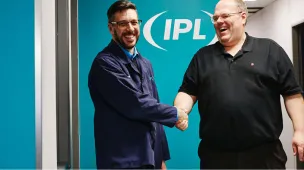Energy savings for businessSolutions that put your energy to work
Sound energy management leads to guaranteed savings and a greater operating efficiency. See how our solutions can help drive the growth of your company.


How can you benefit?
By installing efficient equipment in your buildings you’ll increase productivity and generate recurring savings on your electricity bill.
By reducing your energy use during peak periods to earn a credit applicable to your electricity bill every winter.
Get financial support for energy-efficient solutions
Tailored to meet the specific needs of businesses, the financial support offered as part of the Efficient Solutions Program shortens the payback period on investments to purchase and install efficient equipment.
-
Up to 90%
of the costs to purchase and install equipment generally covered by financial support
-
$177.8M
in financial support by Hydro‑Québec in 2024
-
+ than 6,800
projects to optimize building energy use carried out in 2024 with financial support
It pays to reduce your electricity use at the right time
Contract-free and flexible, the Demand Response (DR) Option can help you earn a credit when you lower or shift your energy use during peak demand events.
-
$51.8M
in credits on the electricity bills of businesses and organizations that signed up for the DR Option in the 2024–2025 season
-
+ than 1,900
businesses and organizations were enrolled in the DR Option during winter 2024–2025
Not sure where to start?
Our team can help you find the best solution to optimize your energy and cash savings!
Results that speak for themselves
Our programs and offers have helped thousands of businesses in different sectors improve their energy performance.

Commercial market
Close to $70,000 in credits on the electricity bills of IGA supermarkets over a single winter

Institutional market
With the DR Option, the CISSS du Bas‑Saint‑Laurent was awarded nearly $2 million in credits on its electricity bills between 2015 and 2023.

Industrial market
With the Efficient Solutions Program, IPL North America Inc. was granted $315,477 in financial support to upgrade its equipment.
See how other businesses have put their energy to work.
More programs to improve the energy efficiency of your business.
Tips for your business
Questions?
Our team of advisors will find the answers.
Business newsletter
Get tips tailored to your business and stay up to date on new offers and additional financing.